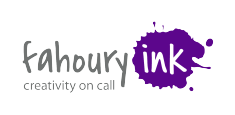Search online for “creative problem solving” and you’ll find yourself wading through more than half a million entries. One of the more interesting approaches to cross our desk in recent days is reverse brainstorming.
Also known as negative brainstorming, this technique invites users to think differently — trying to cause a problem instead of solving it, or achieve the opposite of the desired results.
Why is the reverse technique so often effective, especially when you’ve tried and exhausted other problem-solving methods? Regrettably, it leverages our oh-so-human tendency to see the negative side of things. You’ve certainly been in those meetings where participants find it far easier to tell you why something absolutely won’t work rather than seeing the positives.
Putting together a reverse brainstorming session
Reverse brainstorming sessions start like any other: getting together a diverse group and writing the problem on a white board or flip chart. But instead of brainstorming for possible solutions, ask your team to come up with anything and everything that could make the problem worse.
For example, your organization wants to reduce its carbon footprint. When asked, “How can we be less energy efficient?” your reverse brainstorming team comes up with outlandish ideas like providing bonuses for employees who waste the most energy, installing inefficient lightbulbs, and operating heat-generating equipment at the hottest times of the day during the summer.
But those ideas prompt highly effective solutions, such as running equipment at off-peak hours to save energy and appointing “energy monitors” who reward environmentally sound behavior with on the-spot gift cards.
Turning negatives into positives
One of the best examples of reverse brainstorming comes from a ceramic dinner plate manufacturer that used recycled newspapers to protect its products during shipping. The problem? Employees would get distracted reading the news stories. In a reverse brainstorming session, one of the participants joked, “Too bad we can’t poke their eyes out,” which led to a more acceptable solution: using foreign-language newspapers that nobody could read.
As with any brainstorming tool, the reverse technique is designed to produce a volume of ideas within a short timeframe. Some will be actionable, some ridiculous, but there’s no better way to get your people thinking in new directions and generating some valuable “ah-ha” moments in the process.

